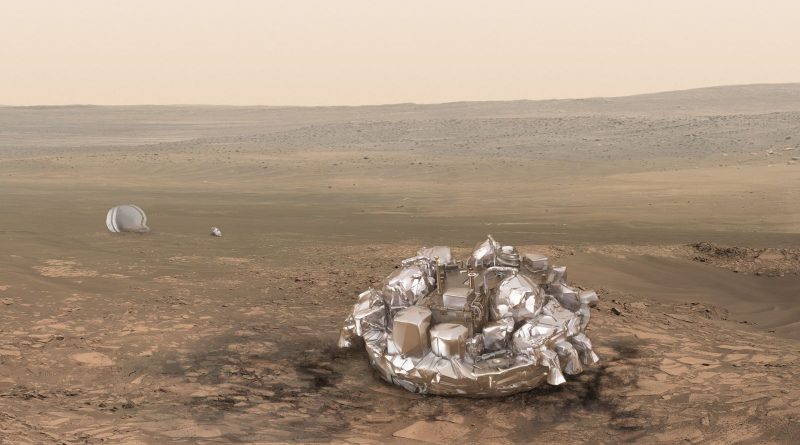ExoMars Orbiter Captured in Mars Orbit, Schiaparelli Lander falls silent before Touchdown
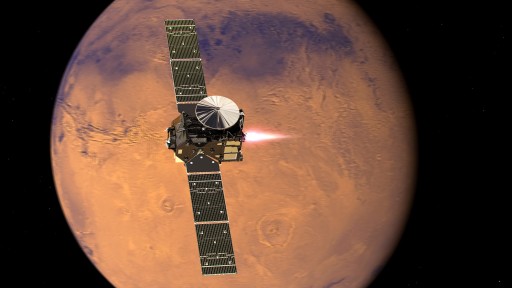
ESA’s ExoMars 2016 mission reached a dramatic culmination on Wednesday when the Trace Gas Orbiter successfully inserted itself into orbit around Mars while the Schiaparelli lander attempted a daring landing maneuver to become Europe’s first craft to achieve the feat of mastering a landing on Mars.
Unfortunately – per all indications received by late Wednesday – Schiaparelli could not conquer the rigors of landing on the Red Planet, though the final verdict on the lander’s status is not expected until Thursday morning when a final data set will have been analyzed.

Data captured by a ground-based recording campaign and a fleet of orbiters positioned over the landing site showed the 577-Kilogram lander survived its hot re-entry and deployed its parachute but there are very strong indications that it ran into trouble after cutting itself loose from the chute at which point a rocket-powered descent was planned to deliver the lander to the surface.
Mars has proven time and time again over the past five decades that achieving a successful landing on the planet’s dusty red surface is a tremendously difficult feat to accomplish – illustrated by an overall success rate of under 50% for the various missions that attempted a landing to date.
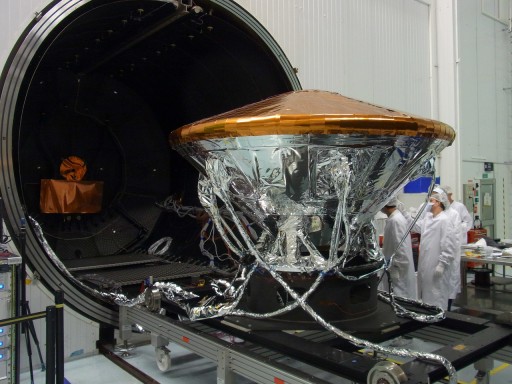
However, there may be a silver lining for Schiaparelli because the ExoMars Trace Gas Orbiter (TGO) was listening in on the data stream transmitted in real time during descent. This data – to be radioed to Earth Wednesday night – may hold the clues needed to piece together what went wrong in the final stages of the descent and also provide a full data set from atmospheric entry, holding information on how the lander’s heat shield fared plus some data on atmospheric properties at Mars.
The ExoMars 2016 mission is a twofold effort combining an orbiter with a small experimental lander. Primarily responsible for the mission’s scientific return is the Trace Gas Orbiter that hosts four instruments – a pair of spectrometers to measure atmospheric trace gases with unprecedented precision, a high-resolution imaging camera to help identify sources & sinks of atmospheric gases, and a suite of neutron sensors and radiation dosimeters to measure the radiation environment at Mars.
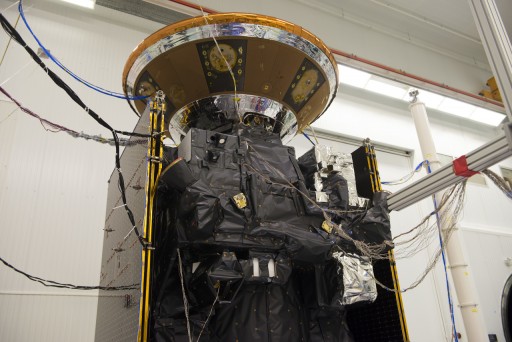
The Schiaparelli lander was first and foremost designed as a test bed for a Mars Entry and Landing Vehicle to demonstrate a Mars landing architecture for the second ExoMars mission that aims to deliver a rover and surface science platform to the Red Planet in 2020.
Capturing data on atmospheric properties during descent and employing an environmental monitoring station for a short-duration surface mission of around four days were classed as secondary bonus objectives.
Launched atop a Proton-M/Briz-M rocket on March 14, 2016, the Trace Gas Orbiter shepherded the much smaller lander to Mars with the two firmly joined for a journey of nearly 500 million Kilometers. They parted ways at 14:42 UTC on Sunday when the Schiaparelli lander was sent on its path to intercept the Martian atmosphere exactly three days later.
TGO fired its main engine for two minutes in the early hours on Monday to avoid a collision with Mars and set itself on a flyby trajectory for Wednesday’s orbital insertion maneuver.
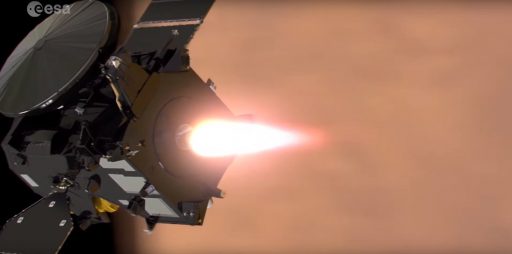
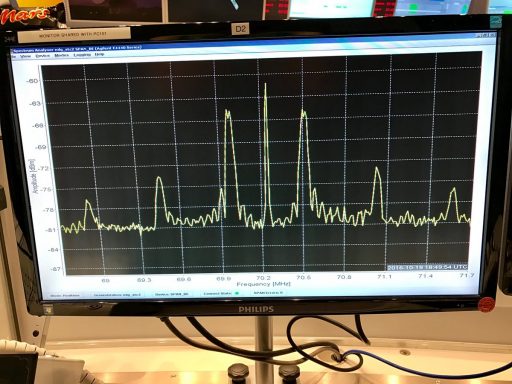
The 424-Newton, 45-Kilogram-force rocket engine was fired up at 13:04 UTC on an exceptionally lengthy firing with a nominal duration of 139 minutes, aiming to slow the orbiter down by 1,550 meters per second in order to be captured in a highly elliptical orbit around Mars.
Tracking the performance of the engine burn, the team at the European Space Operations Center was able to report a very good burn progress with the bipropellant engine actually overperforming by around 1.6% against the predicted performance.
Mars entered the line of sight between the orbiter and Earth at 15:21 UTC, just before the scheduled end of the Mars Orbit Insertion maneuver. Patiently waiting for TGO to re-appear, teams knew that an on-time signal acquisition would be a very good indication that TGO had entered the target orbit of 298 by 95,856 Kilometers with sufficient accuracy.
And indeed, right on the mark at 16:35 UTC, the three prominent peaks appeared in the radio frequency spectrum followed by the acquisition of telemetry data from the orbiter that indicated a nominal burn, based on the spacecraft’s own navigation platform. Teams then completed two hours of ranging to get a definitive confirmation of the spacecraft’s orbit and were delighted to report TGO had arrived in a good orbit around Mars.
While the orbiter’s day was a great success, Schiaparelli’s story would be one of great uncertainty.
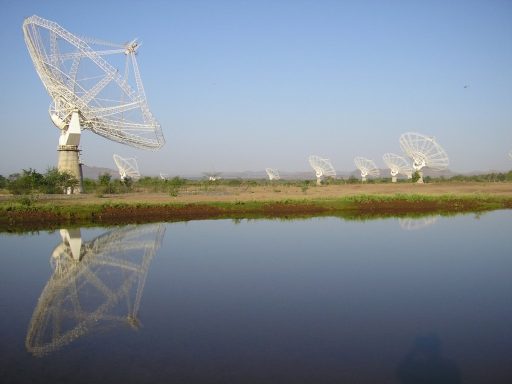
The news was still good early on when the small lander successfully emerged from hibernation and its signals were detected by the Giant Metrewave Radio Telescope (GMRT) in India where twenty-eight 45-meter radio dishes were pointed at Mars to detect the extremely weak UHF signals from the lander.
Recording the signals from closer proximity were two ESA orbiters – TGO that used its Electra UHF terminal to capture the full telemetry stream from the lander, and Mars Express which was only equipped to record the signal spectrum (frequency & intensity as a function of time).
Schiaparelli hit the Martian atmosphere at a speed of 5.83 Kilometers per second at 14:42 UTC, marking the start of an adventurous landing maneuver planned to take just under six minutes.
Slowing down rapidly in the atmosphere, Schiaparelli’s heat shield had to endure temperatures of up to 1,750°C. Signals received at GMRT showed the lander emerged from the plasma blackout and a jump in the Doppler tracking provided a definitive confirmation that the parachute opened around 11 Kilometers in altitude at a speed of ~470m/s.
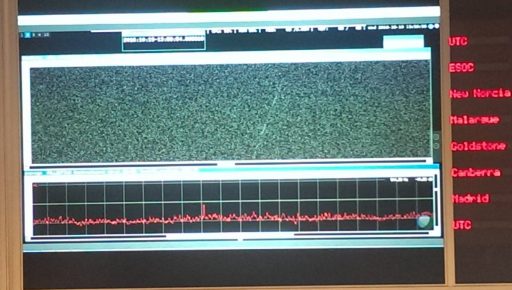
GMRT also confirmed the separation of the heat shield seen as another sudden change in the Doppler Shift signal.
At an altitude of 1.2 Kilometers and a speed of 90m/s, Schiaparelli was planned to cut itself loose from the back shell, drop for one second, and then fire up its nine braking rockets for a half-minute-long powered descent maneuver that was designed to deliver the surface platform to a point 2 meters above the ground for a short drop to the surface.
Separation from the backshell was confirmed through a sudden intensification in the radio signal as a result of the switch to the main UHF antenna on the surface platform.
GMRT lost the UHF signal moments after back shell separation and did not hear anything from Schiaparelli well beyond the expected landing time. However, because the ground-recording setup was experimental, a signal drop was not necessarily an indication of a problem with the lander – requiring teams to wait for more data.
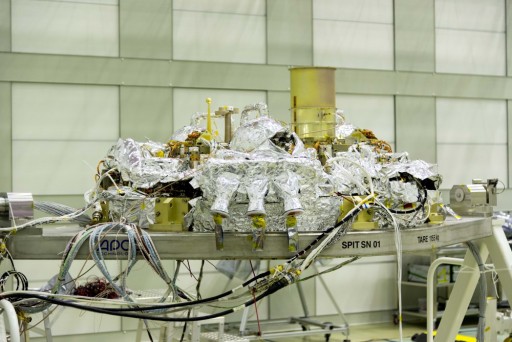
Mars Express, in operation since 2003, began sending what it recorded during the landing attempt at 16 UTC and teams at ESOC began piecing together the UHF spectrum.
In essence, GMRT and Mars Express were collecting the same data with the notable difference of one receiver being 175 million Kilometers closer to the action. Therefore, Mars Express was expected to reveal whether Schiaparelli continued transmitting after the expected touchdown time.
But the UHF signal captured by Mars Express was found to have stopped at the same time GMRT lost the signal lock – ruling out a problem with the ground-based receiver.
There were conflicting reports on whether Doppler Shift signatures were seen for the start of the nine braking rockets.
While the sudden loss of the lander’s signal certainly does not bode well for its outlook, ESA identified some scenarios where they could have a healthy lander on the surface with an antenna malfunction preventing communications. In that event, not all would be lost as there would be ways to troubleshoot and, of course, Mission Controllers will not stand down until all branches of the fault tree are closed out.
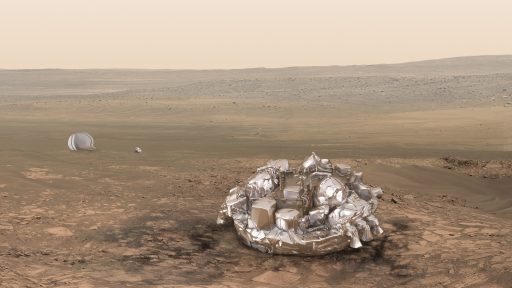
Gearing up for a long night, teams at ESOC will be eagerly awaiting the downlink of around 20 Megabytes of telemetry data from the Trace Gas Orbiter, recorded during the critical EDL maneuver. Unlike the records from GMRT and MEX, this data includes the various onboard parameters and instrument measurements to reveal exactly what happened aboard the lander just before the signals were lost.
Teams will be busy throughout the night analyzing that data and ESA will hold a press conference at 8 UTC on Thursday when the fate of Schiaparelli should be clear.
While the loss of the lander just prior to touchdown would be a disappointment, Schiaparelli nevertheless did at least accomplish some of its objectives – managing to survive atmospheric entry and completing a parachute-assisted descent during which valuable data for future landing systems was gathered.
For the ExoMars Orbiter, a few busy days lie ahead filled with reconfigurations to transition back into a normal state after Wednesday’s critical maneuver. Its science missions will begin about a year from now following a lengthy orbital adjustment campaign aiming for a circular science orbit 400 Kilometers above Mars.

